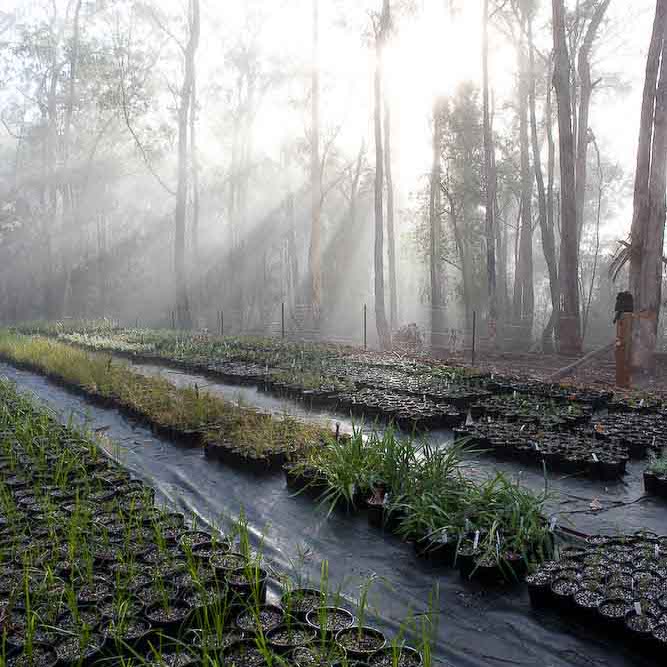- Plants, like people, are about 80% water so they also need it to survive. Plants in irrigated gardens can be conditioned to require less water though this needs to be done gradually. Start by decreasing the frequency of watering and slightly increase the duration of watering. For instance, rather than watering every second day, water every third, then fourth and so on until plants are fine for a fortnight or more without watering. This gruel progression allows plants to adapt to the availability of water.
- Watering only when plants need water and watering deeply encourages deeper root growth resulting in a healthier and more drought-tolerant landscape. Plants will tell you they need water by wilting – if only a few plants in your garden need extra watering there is no need to water the whole garden.
- The frequency of watering should be determined by rainfall pattern and soil should be checked to determine moisture content. Some solid rainfall means you don’t need to water your lawn for up to 2 weeks. Keep an eye on the four-day forecast, and if rain is forecast, wait for it to water your garden. You can check the forecast with the Bureau of Meteorology (www.bom.gov.au)
- Water your garden during the cool parts of the day (early morning or evening) so you don’t lose water to evaporation
- Avoid watering when it’s windy as the wind will blow the water to parts of your garden that don’t need watering
- Water needs to reach around the top 15-20cm of soil. As a rule, if you see more than 1cm of water puddle on the surface, then you’ve added too much. It will permeate the soil beyond your plants’ roots, and go to waste
- Avoid watering leaves and focus on the roots. Watering leaves increases water loss through evaporation, the chance of fungal diseases developing, and can damage leaves on hot sunny days
- Soil takes up water best if you water in short, repeated bursts and a thorough soak less often is better than a frequent surface sprinkle. A good soak encourages the development of strong, deep roots, which eventually reach the water table. Shallow, light watering encourages roots to grow towards the surface, leaving them vulnerable to wind and heat
- A cyclical watering pattern is effective (soaking the soil then coming back to water again after it has had time to be absorbed)
- Annual flowers, bedding plants and some vegetables have shallow roots and so require frequent watering to maintain growth and keep plants healthy and productive
- Shrubs prefer infrequent, thorough soakings to frequent light watering. One thorough watering is needed every 2-3 weeks in Summer, less often in Autumn and Spring
- Watering regimes during the establishment phase of new plantings vary from those of established plants and are generally greater. Remember that plants will only be drought tolerant after they have established a good root system – natives need to be tended and watered until they are established



